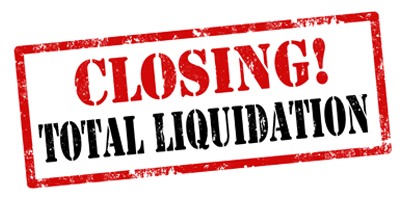About Company Liquidation
About Company Liquidation
Blog Article
Not known Incorrect Statements About Company Liquidation
Table of ContentsHow Company Liquidation can Save You Time, Stress, and Money.The 3-Minute Rule for Company LiquidationSome Known Facts About Company Liquidation.Top Guidelines Of Company LiquidationCompany Liquidation Can Be Fun For Anyone
A liquidator is especially appointed to supervise the winding up of a company's affairs in order for it to be shut down generally when the company is going bankrupt. The liquidator is a neutral 3rd party who supervises the sale of company assets in order to pay off any arrearages.Their duty consists of, however is not limited to: Objective Overseer: A liquidator is tasked with working as a neutral 3rd party to manage the entire firm liquidation procedure. Produce Statement of Affairs: Liquidators have to develop a detailed statement of events document. This document is dispersed to financial institutions, outlining the present financial condition of business at the time of its liquidation.
After the liquidation of a company, its existence is gotten rid of from Business Residence and it stops to be a legal entity. If supervisors navigated the process without concern, there would be no fines or personal responsibility for strong debts expected. Currently, with a fresh start, directors can check out new company possibilities, though professional consultation is suggested.
Unknown Facts About Company Liquidation
If more than 90% of all business investors concur, liquidation can take place on short notice within seven days, the minimal legal notice for creditors. Generally, the bigger the liquidation and the more possessions and resources the organization has, the longer the procedure will certainly take. 'Do I need to pay to liquidate my company?', the answer will depend upon whether or not your company has any type of possessions leftover when liquidating.

We recognize that no two business coincide, which is why we will take the time to be familiar with your business so we can suggest the finest training course of activity for you. We just work in your benefits, so you can be completely confident in the solution we give.
All about Company Liquidation
In the UK, there is an established process to shutting down or restructuring a minimal firm, whether it is solvent or financially troubled. This process is called liquidation and can only be taken care of by an accredited insolvency specialist (IP) according to the Bankruptcy Act 1986. There are 4 primary kinds of business liquidation procedure: Lenders' Voluntary Liquidation (CVL); Required liquidation; Administration; and Participants' Volunteer Liquidation (MVL).

In these you can find out more scenarios, it is necessary that the business ceases trading; if the organization remains to trade, the supervisors might be held directly responsible and it might result in the bankruptcy practitioner reporting wrongful trading, referred to as misfeasance, which might cause lawsuit. The directors appoint an insolvency practitioner and when this has actually been concurred and confirmed, there is a conference with the shareholders.
Obviously, if there are no shareholders, this action of the process is not needed (Company Liquidation). The IP takes control of the firm and begins the company liquidation process. The directors are no more entailed in what happens, including the sale of the business's possessions. If the supervisors desire any of the properties, they can alert the IP.
Excitement About Company Liquidation
The primary distinction is that the business's lenders related to the court for an ending up order which compels the financially troubled business right into a liquidation process. Financial institutions take this activity as a last hotel because they have not gotten payment via other forms of negotiation. The court selects an insolvency practitioner, additionally referred to as a main receiver, to perform the obligatory company liquidation procedure.
This kind of firm liquidation is not voluntary and supervisors' conduct is reported to the UK's Secretary of State once the liquidation procedure has actually been completed. Any kind of director that falls short to comply with the IP or has been included in supervisor misbehavior, or an illegal act, may result in severe consequences.
It is used as a method to see this page shield the company from any type of lawsuit by its lenders. The directors of the business consent to make regular repayments to resolve their debts over a time period. The designated administrator handles the voluntary management procedure, and obtains the payments which they then distribute to financial institutions according to the concurred quantities.
All About Company Liquidation
This gives here the firm with time to create a plan moving forward to rescue the company and stay clear of liquidation. At this point, directors hand control of the firm over to the appointed manager. If a business is solvent however the directors and investors intend to close the service, a Participants Voluntary Liquidation is the right option.
The firm liquidation procedure is managed by a liquidator assigned by the supervisors and shareholders of the company and they have to authorize a declaration that there are no lenders continuing to be. The liquidation process for an MVL resembles that of a CVL because possessions are realised yet the proceeds are distributed to the supervisors and the shareholders of the company after the liquidator's charges have been paid.
Report this page